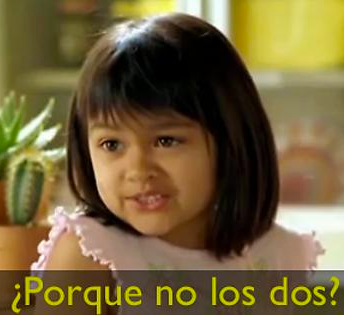
The Road Not Taken By Robert Frost
Two roads diverged in a yellow wood,
And sorry I could not travel both
And be one traveler, long I stood
And looked down one as far as I could
To where it bent in the undergrowth;
Then took the other, as just as fair,
And having perhaps the better claim,
Because it was grassy and wanted wear;
Though as for that the passing there
Had worn them really about the same,
And both that morning equally lay
In leaves no step had trodden black.
Oh, I kept the first for another day!
Yet knowing how way leads on to way,
I doubted if I should ever come back.
I shall be telling this with a sigh
Somewhere ages and ages hence:
Two roads diverged in a wood, and I—
I took the one less traveled by,
And that has made all the difference.
The nature of our language lends to binaries. Either this or this. As a result, we are often presented with taking one of the two paths, and often more than is necessary. This brings the notion of the false dichotomy, where we are seemingly presented with two paths that we can take, but there may be many paths that can be taken, or even well travel both paths.
The misleading nature of a false dichotomy is encapsulated by this meme or Spanish ad: Porque No los Dos – why not both? When we are debating whether hard tacos or soft tacos are the best, we can say ‘why not both’? In Western culture, we may have a hard time choosing a dish in a restaurant, such as choosing between hard tacos or soft tacos. However, a potential way to circumvent this is to embrace a more eastern way of thinking – via sharing dishes, as by sharing we can try all the things of the current meal.

It begs the question: how can we tell a true dichotomy from a false one? As the ability to discern if a dichotomy is true or not will lend to profound implications of improved decision making.
Because English lends to binaries such as either/or, the false dichotomy is sometimes called the either/or fallacy. Due to this bias, pointing out whether dichotomies are true or not is purely dependent on the content of the presented dichotomy, as the delivery or framing of a situation is the guise that the false dichotomy brings. Often situations don’t just have a yes or no, where you can answer yes and no to varying degrees – as of a spectrum.
For instance, let us say we have a certain amount of money $20, and that $20 is only enough to buy a nice gift for Person A, or for person B. Which one do we pick? Though a simple example, this presents a false dichotomy in that we are only presented with two options. What we could do is to split this $20 into two $10, and to buy gifts that are not too expensive for both of them. Or utilising the idea of a spectrum, we could spend $15 on Person A – $5 on person B, $12 on Person A – $8 on Person B, etc.
On top of this, you can apply more creativity and problem solving to the problem to satisfy both options via a 3rd, 4th, or even 5th option. We can try to work more to make more money so that we can afford a $20 gift for both people. We can even aggressively try to find a 50% sale such that we can buy a $10 gift for each person with a $20 value for each. Or even still, if you had a talent for making things, you could make a gift for both of them, and keep the $20.
In other words, the options of a false dichotomy can be endless, in which we have the autonomy to find the most clever way of resolving the predicament.
Robert Frost’s ‘The Road not Taken‘ highlights that there are many dichotomies that we will face in life, and these dichotomies may very well be true or false. However, purely true dichotomies are rare, as each option must be mutually exclusive in which both options encompass all possibilities. However, when faced with two winding paths where one does not know if you can return to the other path, the choice is inevitable. We cannot exist as two separate people, being “sorry we cannot travel both”. Just like how a butterfly can flap its wings to create a tornado on the other side of the world. The butterfly effect suggests that whatever decision that we take, no matter how insignificant, could potentially have life-changing consequences. Yet it is not clear as to which path to choose, indicated by the indecisiveness that permeates Frost’s poem. Who knows if these paths are mutually exclusive. Maybe there is a shortcut along one path to finding the other. Maybe they ironically lead to the same destination. Maybe one is an exclusive path to a distant faraway land, where it is impossible to return.
At the end of the poem, we cannot tell if the speaker of the poem is satisfied with his choice, as the ambiguity of a ‘sigh’ can project contentment with a sigh of relief, or sorrow with a sigh of despair. The path he had taken had “made all the difference”. We can then ask – but what difference? Is it an uplifting or disheartening one? We can never really know, as that is the existential reality of being. We can only ever experience the one path taken, forever losing the experiences of the road not taken. We do not know what all the possible worldlines could offer – whether they would be triumphant, or fatal.
Despite this existential problem, what is most important to realise is that that we should be grateful and filled with gratitude. It is a natural inclination of the human psyche to compare. As the adage goes – “the grass is always greener on the other side.” It is a privilege to be breathing. It is not a light thing to have the autonomy to make a choice, because many in this world, unfortunately, do not have a choice as to what to do with their lives. However, as much as possible, we should strive to spot out the false dichotomies in our lives – because things are not always what they seem to be.

Leave a Reply